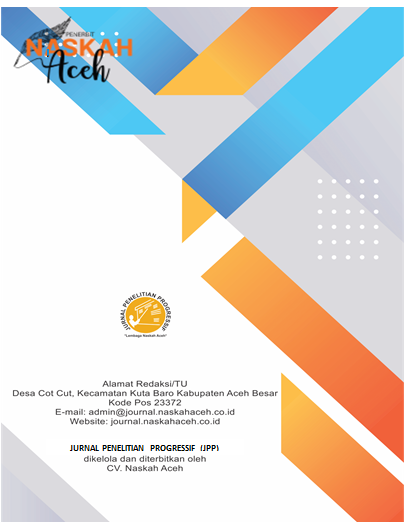THE EFFECT OF LEG MUSCLE STRENGTH TRAINING ON SQUATTING LONG JUMP ABILITY IN STUDENTS OF SENIOR HIGH SCHOOL 1 KUTACANE CLASS XI SCHOOL YEAR 2024/2025
Abstract
The research entitled “The effect of training ”Limb Muscle Strength on the ability of long jump squatting style in SMA Negeri 1 Kutacane Class XI Students of the 2024/2025 Academic Year". This study aims to reveal the effect of training "Limb Muscle Strength on squatting style long jump ability in SMA Negeri 1 Kutacane Class XI Students of the 2024/2025 Academic Year totaling 124 people. The research sample was 35% of the total population of 24 students. The sampling technique was determined by Random Sampling technique. This research is included in Experimental research. The research design carried out was one group pretest-postestdegn. For data collection, long jump measurements were used. Based on the results of data calculation and hypothesis testing and discussion of the results of the study, the average value of the calculation of long jump ability before training "Leg muscle strength in SMA Negeri 1 Kutacane Class XI Students of the 2025/2025 Academic Year is 2.80 meters and after training 3.10 meters. Based on the analysis of the mean difference test, the value of 0.3 meters was obtained. While t count is (1.76) and t table is (1.71). It can be concluded that there is a significant influence between the ability of the long jump after and before training "Leg muscle strength in SMA Negeri 1 Kutacane Class XI Students in the 2024/2025 Academic Year. This can be proven by the comparison of the t-count value greater than the t-table, (1.76> 1.71).
References
Aip Syarifuddi. (1992). Athletics. Jakarta: Department of Education
Arikunto, Suharsimi, (1991). Research Procedures A Practice Approach, Pt Bina Aksara, Jakarta
Berhard G. (1993). Athletics, Basic Principles of High Jumping, Long Jumping, Jangkit and Pole Vaulting. Translation from String Training Voor Djeugd. Semarang: Dahara Prize.
Carr, Garry, (2000). Athletics (Translation Edition). Jakarta: PT. Raja Grafindo Persada.
Department of Education and Culture (1994). Curriculum 1994 and its Supplements Based on Semester System SD/MI. 2002. Jakarta: Ministry of Education and Culture.
______(1997).Physical Condition of Primary School Children. Jakarta: Department of Education and Culture.
Engkos Kokasih. (1993). Sports, Techniques and Exercise Programs. Jakarta: Akademik Presindo.
_______(2000). Statistics II. Yoqyakarta: Andi.
Harsono. (1982). Coaching Science. Jakarta: Koni Center.
_______(1998). Coaching, Psychological Aspects and Coaching, Jakarta: Tambak Kusuma.
Johnson. Barry. L. (179). Practical, Measurements For Evelution In Physical Education. New York: Macimillah Publishing Company.
Koni. (2000). Coaching Guide. Jakarta: Koni.
M. Sajoto. (1988). Improvement and Development of Sports Physical Condition Strength. Semarang: Dahara Prize.
Najir, Muhammad, (1988). Research Methods. Ghalia Indonesia: Jakarta.
_______ (1988). Physical Condition Development in Sports. Jakarta: Department of Education and Culture.
Seordarmito and Suparman. (1995). Kinesiology Subject Matter, Jakarta: Ministry of Education and Culture.
Sugito, Bambang Widjanarko and Ismaryati. (1994). Athletic Education. Jakarta.
Suharno Hp. (1986). Sports Coaching Science, Yoqyakarta.
Suharsimi Arikunto. (1998). Research Procedures, A Practice Approach. Jakarta: Rineka Cipta.
Sutrisno Hadi. (1988). Research Methodology I, II and IV. Yoqyakarta: Andi Offset.
Syarifuddin Aip and Muhadi. (1992/1993). Physical Education and Health, Jakarta: Department of Education and Culture.
Sudjana, (1989). Statistical Methods, 4th Edition, Tarsito: Banndung.
















